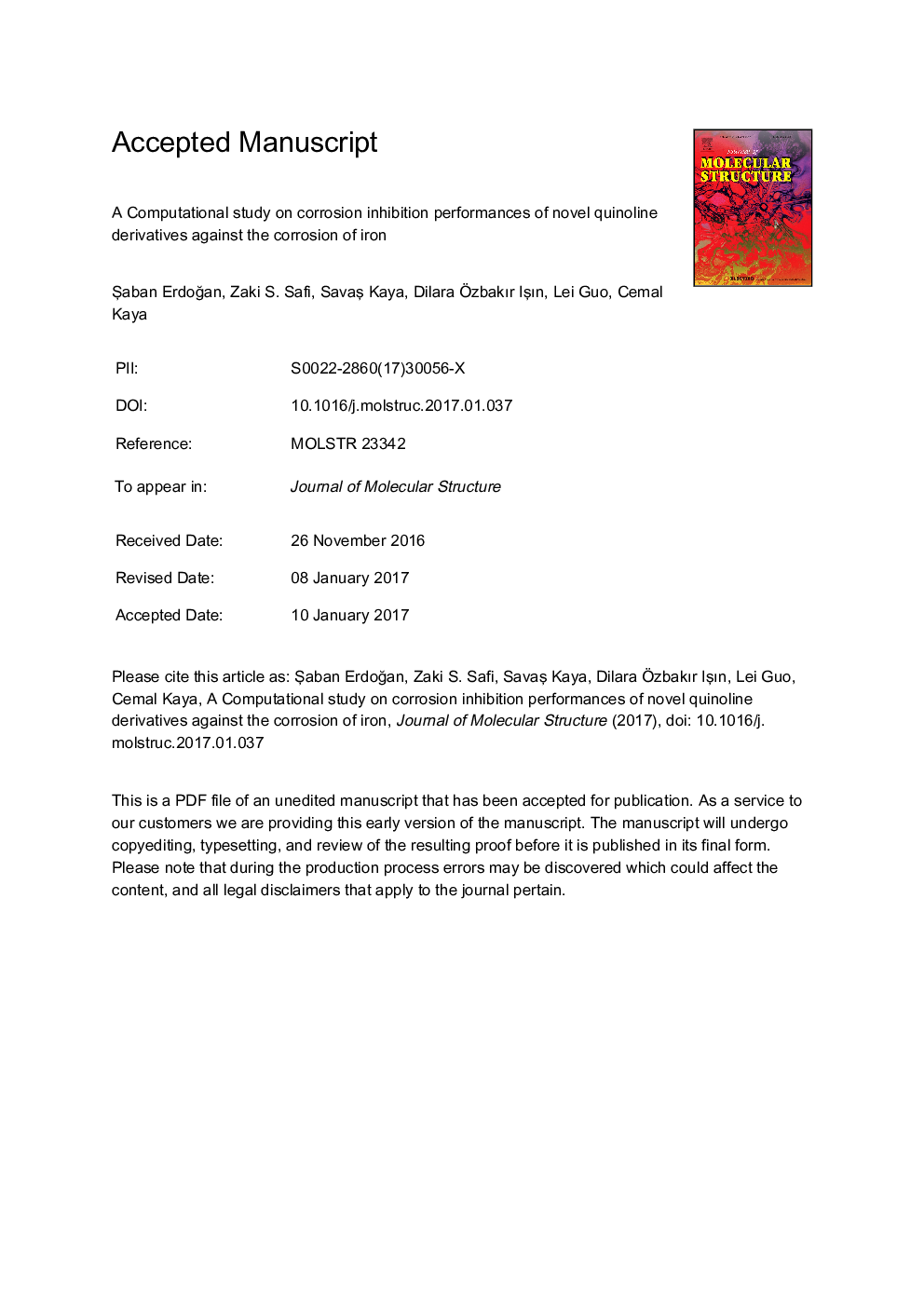| Article ID | Journal | Published Year | Pages | File Type |
|---|---|---|---|---|
| 5160762 | Journal of Molecular Structure | 2017 | 26 Pages |
Abstract
In this computational study, the adsorption and corrosion inhibition properties of some novel quinoline derivatives namely, 2-amino-7-hydroxy-4-phenyl-1,4-dihydroquinoline-3-carbonitrile (Q1), 2-amino-7-hydroxy-4-(p-tolyl)-1,4-dihydroquinoline-3-carbonitrile (Q2), 2-amino-7-hydroxy-4-(4-methoxyphenyl)-1,4-dihydroquinoline-3-carbonitrile) (Q3) and 2-amino-4-(4-(dimethylamino)phenyl)-7-hydroxy-1,4-dihydroquinoline-3-carbonitrile (Q4) on the corrosion of iron were investigated using quantum chemical and molecular dynamics simulation approaches. Quantum chemical calculations section of the study provides enough calculation and discussion on the relationship between corrosion inhibition and global reactivity descriptors such as EHOMO, ELUMO, HOMO-LUMO energy gap (ÎE), chemical hardness (η), softness (Ï), electronegativity (Ï), chemical potential (μ), electrophilicity (Ï), nucleophilicity (É), electrons transferred from inhibitors to metal surface (ÎN), initial molecule-metal interaction energy (ÎÏ), total electronic energy (E), the energy change during electronic back-donation process (ÎEb-d). The adsorption behaviors of studied compounds on Fe (110) surface were investigated with the help of molecular dynamics simulation approach. The binding energies calculated on Fe (110) surface of mentioned quinoline derivatives followed the order: Q4 > Q3 > Q2 > Q1. It should be noted that the results obtained in the study are in good agreement with experimental inhibition efficiency results earlier reported.
Related Topics
Physical Sciences and Engineering
Chemistry
Organic Chemistry
Authors
Åaban ErdoÄan, Zaki S. Safi, SavaÅ Kaya, Dilara Ãzbakır IÅın, Lei Guo, Cemal Kaya,
